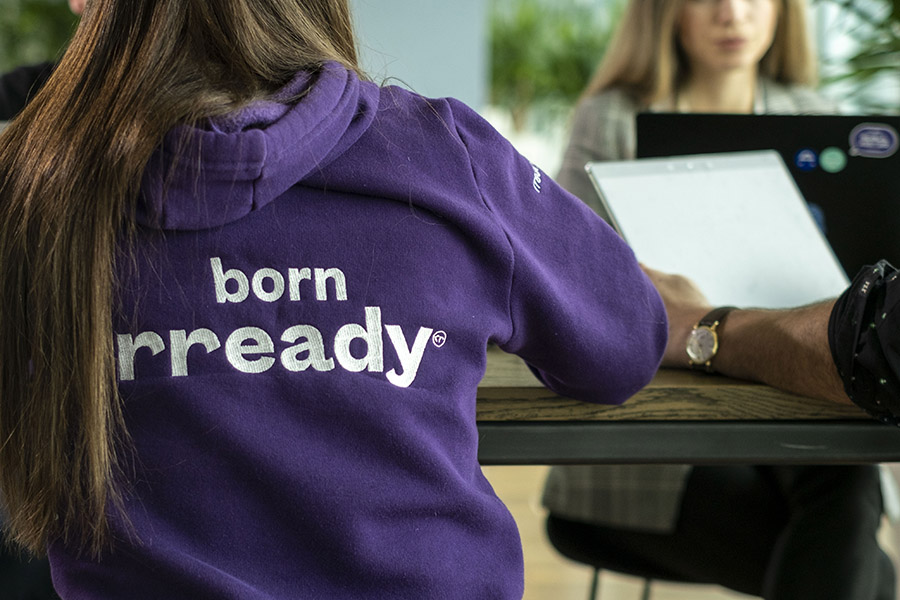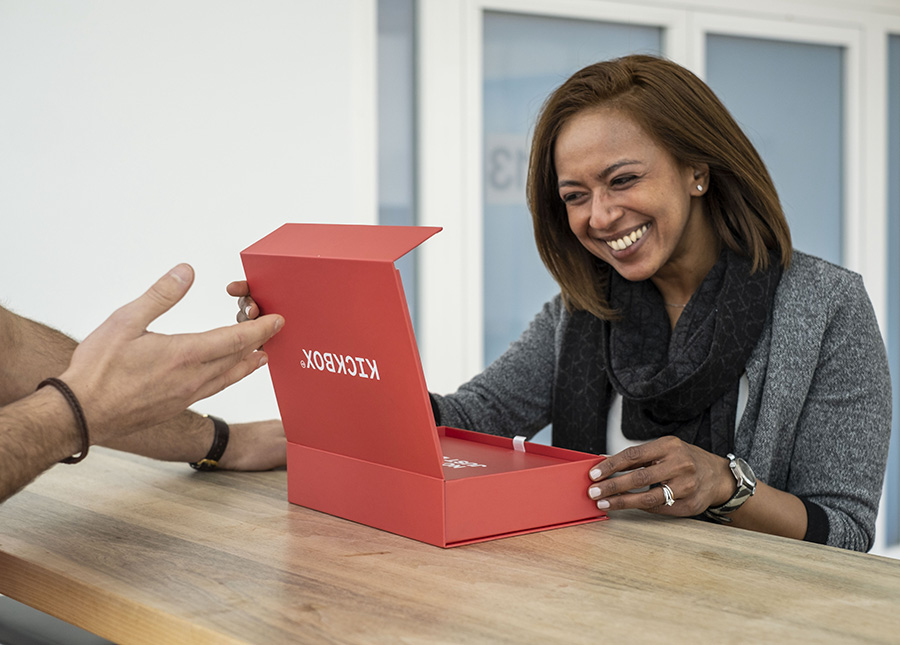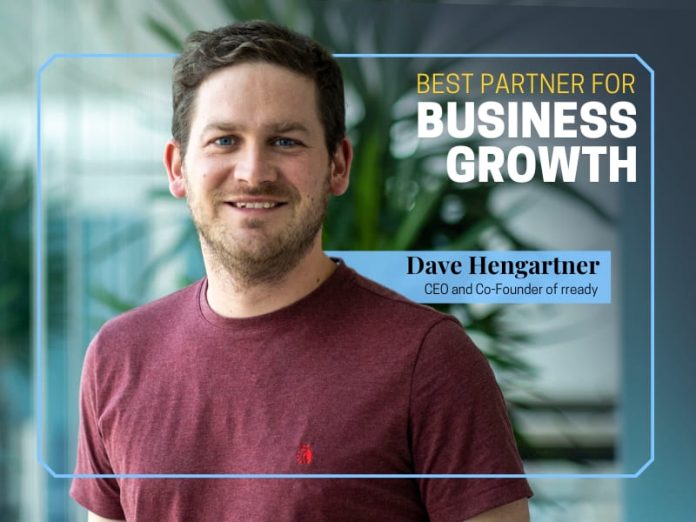It’s not new for organizations to seek to harness their employees’ good ideas. But how can they best manage the process of evaluation and implementation? David Hengartner of rready has the right idea!
It’s an honour to meet you, Mr. Hengartner! Thank you for taking the time to talk with us. Can we begin with a few words on what sparked your interest in bottom-up innovation back in 2015?
I have always been fascinated by the power of grassroots initiatives when it comes to corporate innovation, and the untapped potential that exists in organizations, within their employees.
In every job that I’ve held, whether in banks, consultancies, or startups, I’ve strived to establish new initiatives and challenge the status quo. When I started working at Swisscom, I recognized the potential within the organization’s employees. All they needed was the time, money, tools and, most importantly, the ‘license to innovate’.
I then went on to launch KICKBOX, a methodology that combines employee know-how with the necessary resources to democratize innovation and make it available to all employees at scale.
rready has a strong focus on the corporate innovation space. Was this always your vision for the company, and did you expect it to grow into a global innovation ecosystem?

We’ve always believed that there is a lot of room for improvement when it comes to corporate innovation initiatives in organizations. We anticipated that more companies would recognize the need to implement programs that focus on driving innovation through their employees, allowing everyone – not just a single team – to innovate.
Recent signs are very encouraging, as more organizations are now embracing this culture of encouraging decentralized innovation with centralized oversight.
What role does the concept of intrapreneurship play in fostering a culture of innovation within large organisations?
Intrapreneurship enables every employee to innovate and contribute to the future of their company. It is a tangible action that shows employees across all departments and hierarchical levels that their contributions are valued, by making the employees the owners and drivers of their projects.
Through intrapreneurship programs, employees are free to work on projects that are challenging, interesting, and meaningful to them. By embracing intrapreneurship, organizations send a clear message: “We believe in you and your creativity, and we trust you with this time and these resources.” This alone is an incredible accelerator for fostering a culture of innovation.
We heard that you recently collaborated on a report with the University of St. Gallen. Can you share how that collaboration came about and what the experience was like working together on this report?
Our goal with this report was to create something valuable for the innovation community. We realized that there are a lot of global or US-oriented reports, but we couldn’t really find any concrete data on Europe. That’s why we partnered with the University of St. Gallen – where three of rready’s founders are alumni – to offer localized insights on the state of innovation in Europe.
The University is renowned for its high-quality research during its projects, and they are very passionate about innovation management. While this project required quite a few resources, we are very proud of the outcome, especially given the positive feedback we have received from community members who have found it helpful.
How do these findings align with the challenges you’ve observed in European organisations regarding innovation?
Many of our assumptions were confirmed with concrete numbers, but a few new findings also emerged. In some cases, we suspected certain trends, but the actual numbers were significantly higher or lower than expected. For instance, while we know from experience that higher management, especially CEOs, are typically not heavily involved in the innovation process, we did not anticipate that 84 per cent of respondents would report that their CEOs were not involved at all. This is a high percentage and a rather concerning one at that.
The report highlights that European executives are currently focusing their efforts on addressing inflation, supply chain problems, and accelerating digitalisation. How can rready’s solutions assist in tackling these specific challenges?
Our solutions encourage idea submission from all employees, making innovation accessible to all employees and increasing the likelihood of successful ideas emerging.
Our programs are based on a proven methodology, ensuring a “fail-proof” approach to innovation, where only the most viable ideas advance, to maintain a cost-effective process.
What specific aspects of the KICKBOX method do you believe make it particularly effective for businesses in the initial phases of innovation?
KICKBOX is a scalable program that enables organizations to leverage the collective know-how of their entire workforce, resulting in a high volume of idea submissions. The methodology on which the program is based acknowledges that the organization already has the key resource to innovate and take it to new heights – namely its employees.
Our solutions encourage idea submission from all employees, making innovation accessible to all employees and increasing the likelihood of successful ideas emerging.
It is considered best practice to keep the entry gates to the initial stage of your innovation funnel wide open and collect a high quantity of raw ideas. KICKBOX is ideal in this respect, due to its relatively low barriers to entry, allowing companies to gather a diverse range of ideas to test and gather data from, and ultimately decide which ones to pursue.
Additionally, KICKBOX helps to cultivate and bring forth cultural change by involving everyone in company-wide innovation. This promotes a culture where creativity is celebrated, especially during the early stages of the innovation process.

The report emphasises a comprehensive approach to innovation, from development to testing to validation. How does your Idea Management platform help companies manage these processes efficiently?
rready’s Idea Management platform is designed to support companies throughout the entire innovation lifecycle in an efficient and effective way. It has various key features that help companies to focus on sourcing and managing ideas in a user-friendly way.
1. Idea Submission
Employees can easily submit ideas using our modern and intuitive interface. Customizable forms allow for the collection of relevant and structured information.
2. Validation and Evaluation
Our platform includes metrics and evaluation criteria to assess the feasibility and potential impact of ideas. Program leads and decision-makers can use these insights to validate the best ideas and move them forward in the innovation pipeline.
3. Collaboration
Through comments, reactions, automated emails, and a newsfeed, program leads can engage the workforce and provide the innovators with the chance to obtain diverse feedback on their ideas from various stakeholders. Gamification elements such as badges and points motivate users to contribute more.
4. Management
The platform offers project management features that help track the progress of ideas as they move through various stages of the innovation process. This includes filters and search options for quick organization and task management.
5. Reporting
Our integrated business intelligence system ensures robust reporting and dashboards. This enables program leads to visualize, analyze, and share data about the organization’s innovation program.
6. Artificial Intelligence (AI)
Our platform offers various AI-features, including Chatbot support, content management, and further copilot support to streamline the innovation process and allow innovators to refine their concepts at a much faster pace.
7. Integration
As an API-first platform, our solution can be easily integrated into the existing tool landscape of an organization. We also personalize onboarding, workflows, and roles to the specific requirements of the company.
You identified some barriers to innovation in the report. How does rready plan to address these?
Based on thorough market research, the findings of this report and our experience in the market, we have refined our offerings and adjusted them to help overcome some of these barriers to innovation.
One key adjustment is our Best-price Guarantee, which lowers entry costs for companies without compromising the value and quality of our offerings. Instead of spending large sums of money on sourcing and managing ideas, our solutions help organizations allocate the funds where the value is created – in the actual execution of ideas.
According to the findings, European organisations are increasingly adopting iterative approaches and are more willing to be flexible. Can you tell us how rready’s End-to-End Innovation Suite plans to integrate these trends to enhance performance?
Through years of iteration, we have developed modular solutions to provide flexibility for organizations when it comes to innovation. Our comprehensive innovation suite is tailored to meet specific needs and seamlessly integrates into existing processes.
Our solutions also ensure cost-effectiveness, eliminating the high initial investment typically required for implementing an innovation management program.
Looking ahead, what future developments or enhancements can we expect from you and your company?
As mentioned earlier, we are constantly iterating and improving our existing solutions. From the start, we recognized the importance of staying ahead by applying innovative practices to our own ways of doing things and operating.
That said, we will continue to focus on integrating AI, where we see great potential for this technology to be used as a copilot for innovators in accelerating their innovation journey. Recently, we’ve had great results by leveraging LLMs during ideation workshops that enable aspiring innovators to come up with great ideas.
Beyond that, we have expanded our offerings to address a broader range of needs, moving beyond our flagship KICKBOX program. Our goal is to become the central platform where all decentralized innovation initiatives are made visible and measurable across an organization.
Lastly, as a CEO, how would you define success?
For me, success is seeing the impact that our programs and solutions have on our customers’ organizations and employees. It’s incredibly satisfying to witness how our programs help them to grow both professionally and personally, empowering them to leave a mark in their organizations through powerful ideas and innovations.
Executive Profile





































